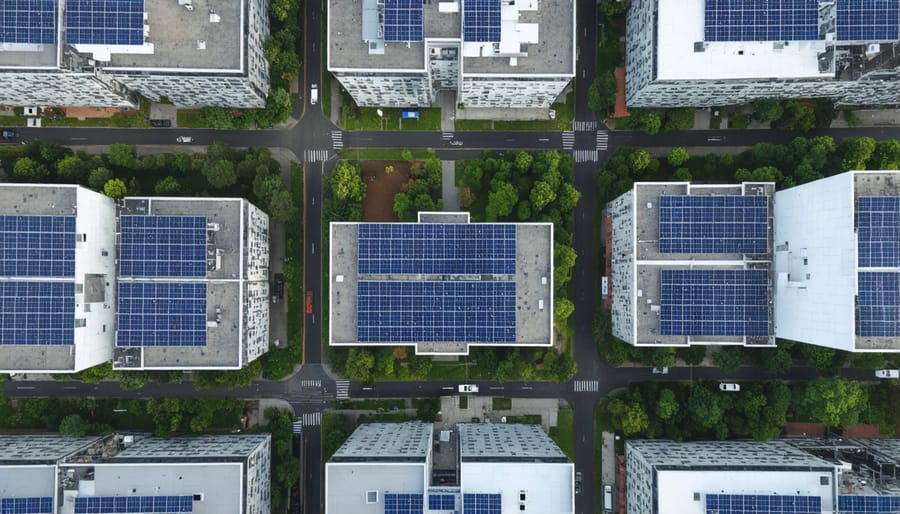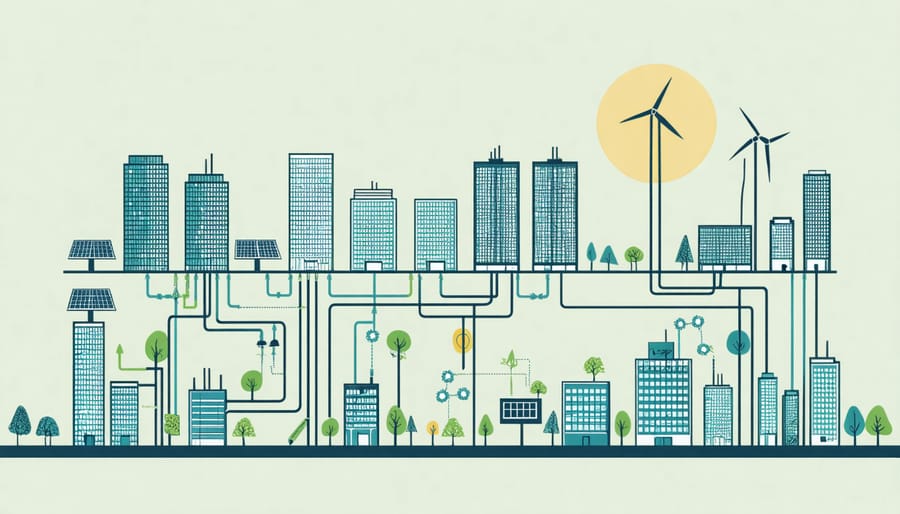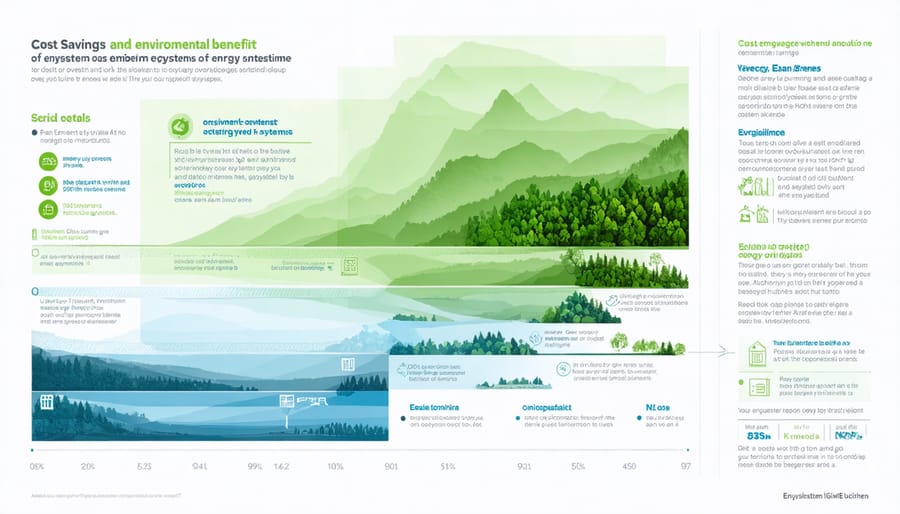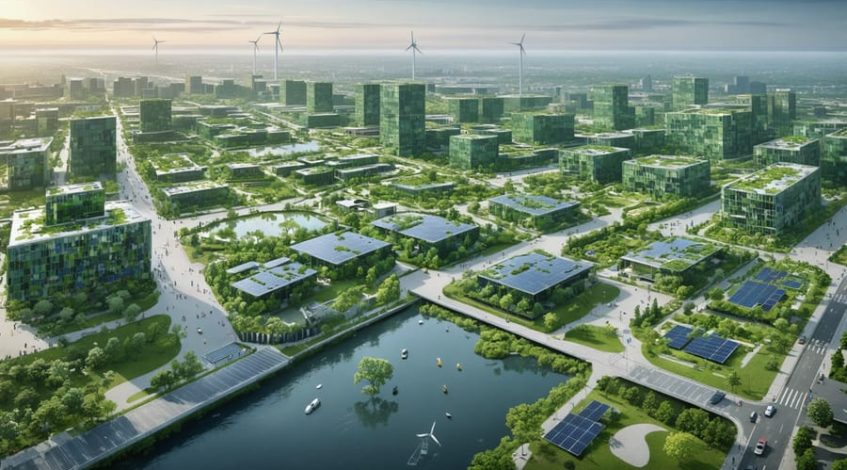Functional ecology transforms urban landscapes into resilient, self-sustaining ecosystems that generate measurable economic and environmental returns. By integrating natural processes with built infrastructure, cities can reduce operational costs by 15-30% while enhancing biodiversity and climate resilience. This emerging discipline bridges the gap between traditional urban planning and ecological science, offering practical solutions for modern urban challenges.
Consider how Central Park serves as both a recreational space and a crucial ecosystem service provider, managing stormwater, reducing urban heat, and supporting thousands of species while generating over $1 billion in economic value annually. Similar implementations in Singapore’s Gardens by the Bay demonstrate how functional ecology principles can create world-class attractions while delivering essential ecosystem services.
For municipal decision-makers, functional ecology represents a strategic approach to urban development that addresses multiple challenges simultaneously: climate adaptation, biodiversity conservation, and public health improvement. By incorporating these principles into urban planning, cities can build resilience while reducing long-term infrastructure costs and enhancing quality of life for residents.
The Symbiosis of Urban Infrastructure and Energy Systems
Energy Flow Patterns in Urban Ecosystems
Urban ecosystems exhibit distinct energy flow patterns that differ significantly from natural ecosystems. In cities, energy primarily flows through human-engineered systems, creating complex networks of consumption and distribution. These patterns are characterized by high energy density, concentrated demand centers, and multiple interconnected subsystems.
The primary energy inputs in urban environments come from both external sources (imported electricity, fossil fuels) and internal generation (solar installations, waste-to-energy facilities). This energy then flows through various sectors including residential, commercial, and industrial zones, each with unique consumption patterns and peak demand periods.
Buildings serve as major energy nodes, consuming approximately 40% of urban energy resources. The vertical structure of cities creates unique microclimate effects, influencing energy consumption through heat island phenomena and modified wind patterns. Modern smart cities are implementing advanced monitoring systems to track and optimize these energy flows, resulting in more efficient distribution networks.
Energy cascading, where waste energy from one process powers another, is becoming increasingly important in urban ecosystem management. This approach has shown potential for reducing overall energy consumption by 20-30% in pilot projects, while simultaneously decreasing operational costs and environmental impact.

Natural Systems Integration
Natural ecosystems provide invaluable blueprints for designing sustainable urban energy systems. By studying and implementing biological synergy in energy systems, urban planners can create more resilient and efficient infrastructure. Key natural processes that can be integrated include distributed energy generation, mimicking how forests create multiple layers of energy capture, and adaptive load balancing, similar to how organisms regulate their energy consumption based on availability.
Successful implementation examples include green corridors that combine solar panels with natural vegetation, creating dual-purpose spaces that generate power while maintaining biodiversity. Urban wetlands can be incorporated into hydroelectric systems, providing both power generation and natural flood control. These integrated approaches typically reduce infrastructure costs by 20-30% while increasing system reliability.
Cities like Copenhagen and Singapore demonstrate how natural ventilation patterns can be utilized for passive cooling, reducing energy demand for climate control. By aligning urban development with ecological processes, municipalities can achieve both environmental and economic benefits while ensuring long-term sustainability.
Practical Applications in Modern Cities
Solar Integration Case Study
The city of Melbourne’s Central Business District (CBD) demonstrates a compelling example of successful urban solar integration, showcasing how functional ecology principles can transform metropolitan energy systems. In 2019, the CBD implemented a comprehensive solar strategy that combined rooftop installations with innovative vertical solar panels on building facades, achieving a 32% reduction in grid dependency within two years.
This initiative, part of a broader community solar implementation program, utilized advanced photovoltaic technology specifically designed for urban environments. The project incorporated biodiversity considerations by creating green corridors between solar installations, which serve as habitats for local wildlife while optimizing panel efficiency through natural cooling effects.
Key success factors included:
– Strategic placement of panels to maximize exposure while minimizing interference with existing infrastructure
– Integration with smart grid technology for optimal energy distribution
– Implementation of energy storage systems to manage peak load periods
– Development of maintenance protocols that protect both equipment and urban wildlife
The financial outcomes exceeded projections, with participating buildings reporting average energy cost reductions of 45% and a return on investment period of 4.2 years. This case study demonstrates how ecological principles can be successfully applied to urban energy systems while delivering substantial economic benefits and environmental improvements.

Energy-Efficient Building Networks
Modern buildings are evolving beyond standalone structures into interconnected energy ecosystems that maximize efficiency and sustainability. Through smart energy integration, buildings can share resources, balance loads, and optimize energy consumption across entire districts or campuses.
These networked systems typically incorporate multiple elements: shared renewable energy generation, district heating and cooling, energy storage facilities, and intelligent distribution networks. By connecting multiple buildings, excess energy generated by one structure can be utilized by another, reducing waste and maximizing resource efficiency.
The implementation of building energy networks has shown remarkable results in various urban developments. For example, the Stockholm Royal Seaport district achieved a 60% reduction in energy consumption through interconnected building systems and smart grid technology. Similarly, Singapore’s Marina Bay district demonstrates how integrated building networks can optimize cooling system efficiency across multiple high-rise structures.
Key benefits include reduced operational costs, enhanced grid resilience, and improved energy security. The system’s ability to balance peak loads and manage demand response programs provides significant economic advantages for building owners and operators. Additionally, these networks create opportunities for energy trading between buildings, establishing new revenue streams while promoting sustainable urban development.
Future developments in this field point toward increasingly sophisticated networks that incorporate artificial intelligence for predictive energy management and automated optimization, further enhancing the efficiency of urban energy ecosystems.
Implementation Strategies for Urban Planners
Assessment and Planning Tools
Assessment and planning tools in functional ecology provide essential frameworks for understanding and optimizing ecosystem-based energy systems. Geographic Information Systems (GIS) serve as primary analytical tools, enabling planners to map energy resources, analyze spatial relationships, and identify optimal locations for renewable energy installations.
Energy flow analysis tools help quantify resource consumption patterns and identify efficiency opportunities within ecosystems. These include Material Flow Analysis (MFA) and Life Cycle Assessment (LCA) methodologies, which track energy and resource movements throughout system boundaries.
Ecosystem service assessment matrices allow practitioners to evaluate the multiple benefits and trade-offs of different energy strategies. These matrices typically incorporate economic valuations, environmental impact assessments, and social benefit analyses to support informed decision-making.
Advanced modeling software, such as EnergyPlus and eQUEST, enables detailed simulation of energy dynamics within built environments. These tools can predict energy consumption patterns, evaluate system performance, and optimize resource allocation based on ecological principles.
Monitoring and verification protocols, including real-time data collection systems and environmental sensors, provide crucial feedback for adaptive management strategies. These tools help track system performance, validate energy savings, and ensure continued alignment with ecological objectives.
Performance indicators and benchmarking tools facilitate comparison across different projects and help establish best practices. Key metrics typically include energy efficiency ratios, carbon footprint measurements, and ecosystem health indicators that guide continuous improvement efforts.
Stakeholder Integration Framework
Successful integration of stakeholders in functional ecology planning requires a systematic approach that prioritizes collaboration and shared decision-making. The framework begins with early identification of key participants, including utility providers, local businesses, community representatives, environmental organizations, and government agencies.
Effective stakeholder engagement typically follows a four-phase process: initial assessment, consultation, active participation, and continuous feedback. During the assessment phase, planners map out stakeholder interests, influence levels, and potential contributions to the project. This information forms the foundation for developing targeted engagement strategies.
The consultation phase involves structured dialogue through workshops, focus groups, and surveys to gather diverse perspectives on ecological impacts and energy needs. These insights help shape project objectives and identify potential challenges early in the planning process.
Active participation occurs through working groups and advisory committees where stakeholders contribute directly to solution development. This collaborative approach ensures that technical solutions align with community needs and ecological considerations. Regular progress reviews and adjustment mechanisms allow for dynamic response to changing circumstances.
The framework emphasizes transparent communication channels and clear documentation of decisions and outcomes. Success metrics should include both quantitative measures (energy efficiency, cost savings) and qualitative indicators (stakeholder satisfaction, ecosystem health). This integrated approach has proven effective in numerous urban development projects, leading to more sustainable and widely accepted energy solutions.
Economic Benefits and ROI Analysis
Long-term Cost Savings
Implementing functional ecology principles in urban environments yields substantial long-term cost savings through multiple channels. Studies show that organizations adopting ecological design principles typically experience a 25-40% reduction in operational costs over a ten-year period. These savings primarily stem from reduced energy consumption, lower maintenance requirements, and improved resource efficiency.
A primary source of cost reduction comes from optimized energy systems that mirror natural processes. For example, buildings designed with natural ventilation and thermal regulation features can reduce HVAC costs by up to 30% annually. Similarly, water management systems based on ecological principles can decrease water utility expenses by 40-60% while simultaneously reducing stormwater management costs.
The financial benefits extend beyond direct utility savings. Organizations implementing functional ecology principles report significant reductions in maintenance and replacement costs. Natural systems are inherently more resilient and self-sustaining, requiring less frequent intervention and repair. For instance, green infrastructure solutions typically have a lifespan 1.5 to 2 times longer than traditional gray infrastructure alternatives.
Insurance companies are increasingly recognizing the risk-mitigation benefits of ecological design, offering premium reductions of up to 15% for properties incorporating these principles. Additionally, properties featuring functional ecological systems typically command higher resale values and attract premium tenants, resulting in enhanced asset appreciation over time.
Recent case studies from major urban centers demonstrate that the initial investment in functional ecology systems is typically recovered within 4-7 years, with continued cost savings thereafter. When factoring in rising energy costs and increasingly stringent environmental regulations, the long-term financial advantages become even more compelling.

Environmental Value Creation
Environmental value creation in functional ecology involves quantifying ecosystem services and translating them into tangible economic benefits. This approach helps organizations and municipalities understand the financial implications of maintaining healthy ecological systems within their operational frameworks. By assigning monetary values to environmental services, decision-makers can better justify investments in sustainable infrastructure and natural capital.
Key metrics in environmental value creation include carbon sequestration potential, water purification capabilities, and ecosystem resilience factors. For instance, urban green spaces can provide annual economic benefits ranging from $2,000 to $15,000 per hectare through reduced heating costs, improved air quality, and enhanced stormwater management. When combined with modern energy systems and energy-water integration benefits, these values can increase significantly.
The economic valuation process typically considers:
– Direct cost savings from reduced resource consumption
– Avoided infrastructure costs through natural system utilization
– Enhanced property values from improved environmental quality
– Reduced health-related expenses due to better air and water quality
– Increased productivity from improved working environments
Recent studies indicate that every dollar invested in ecological infrastructure can yield between $3 and $7 in return through various environmental services. This ROI calculation includes both immediate cost reductions and long-term benefits such as climate resilience and reduced maintenance requirements. Organizations implementing functional ecology principles often report significant improvements in their environmental, social, and governance (ESG) metrics, leading to better access to green financing and enhanced stakeholder relationships.
Functional ecology continues to emerge as a critical framework for developing sustainable urban environments and resilient ecosystems. The integration of ecological principles into urban planning and development has demonstrated significant benefits, from enhanced biodiversity to improved resource efficiency and reduced operational costs. As cities worldwide face increasing environmental challenges, the application of functional ecology principles offers practical solutions that balance human needs with ecological sustainability.
Looking ahead, the field of functional ecology is poised to play an even more crucial role in shaping future urban development. Advanced technologies, including AI-powered monitoring systems and smart infrastructure, will enable more precise ecosystem management and better prediction of environmental impacts. The growing emphasis on green infrastructure and nature-based solutions suggests a promising trajectory for implementing functional ecology principles across various scales.
For business leaders and policy makers, understanding and applying functional ecological approaches will become increasingly important for long-term success. Organizations that embrace these principles now will be better positioned to meet future environmental regulations, reduce operational costs, and maintain competitive advantages in an increasingly sustainability-conscious market.
The key to successful implementation lies in continued collaboration between scientists, urban planners, and decision-makers, supported by robust data collection and analysis. As we move forward, investing in functional ecology applications will not only benefit individual organizations but contribute to the broader goals of urban sustainability and climate resilience.

